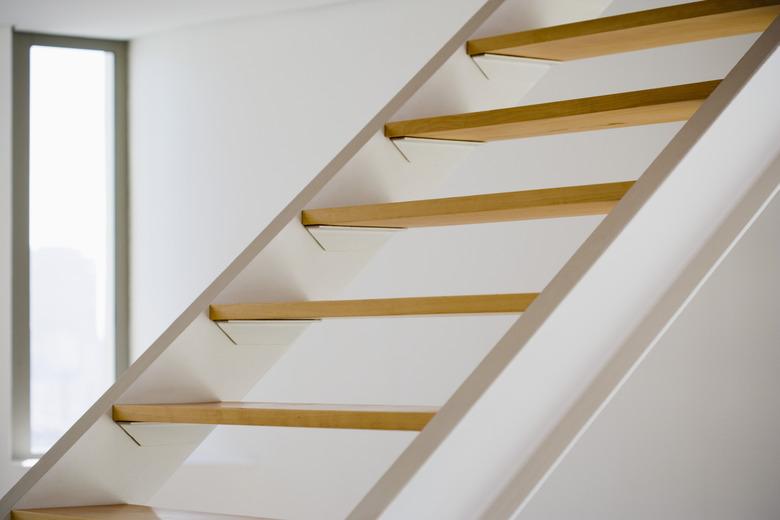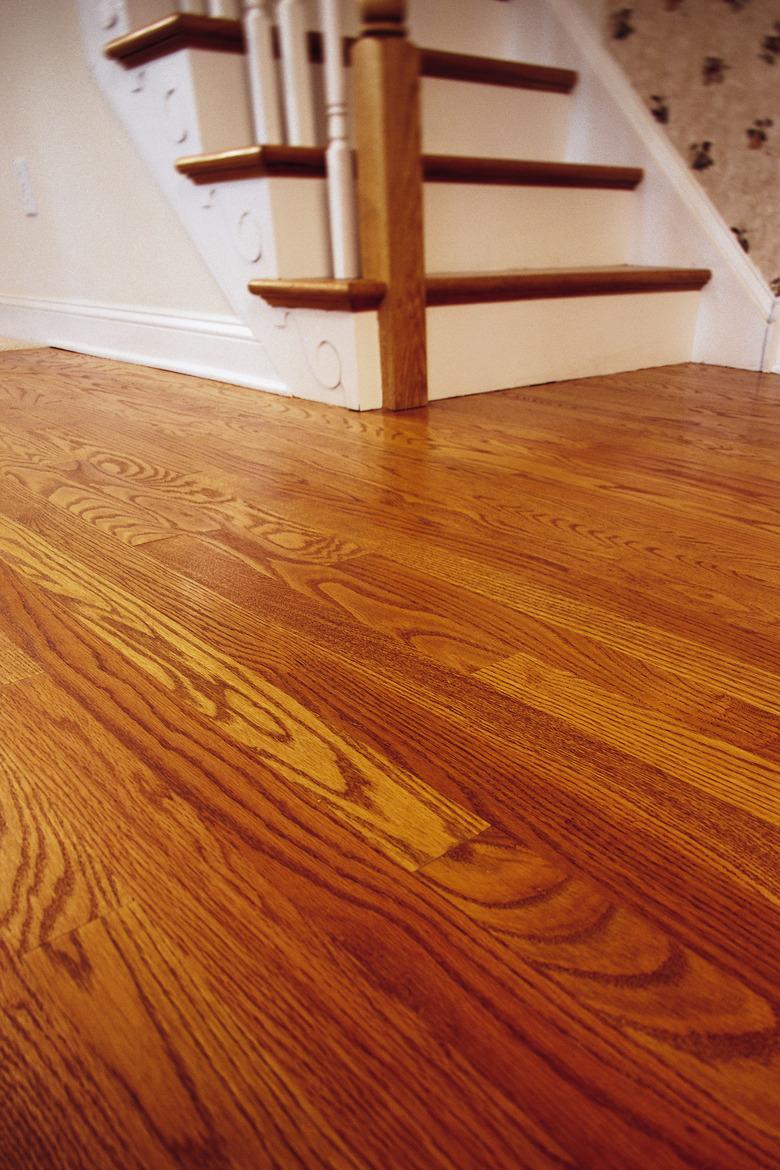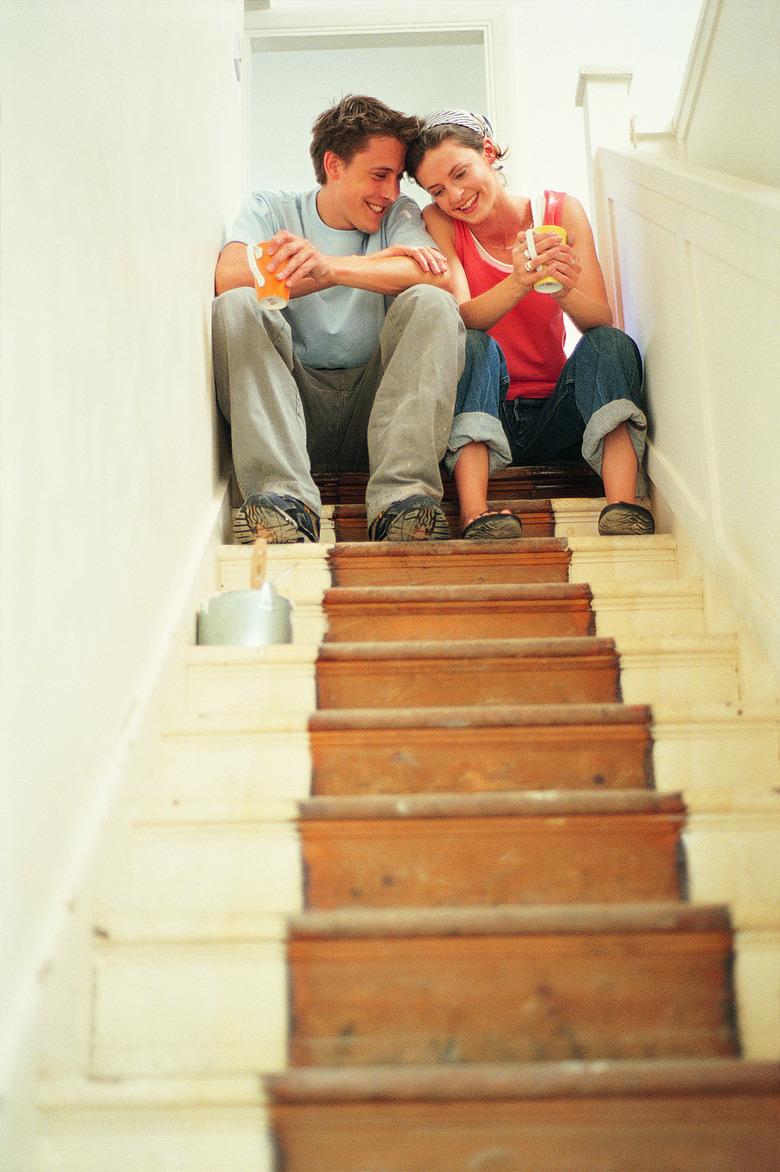The Difference Between Pine & Oak Stairs
Pine and oak are two woods commonly used in stair treads. Both can be purchased at any big-box home improvement retailer or lumber supply yard. Both are durable, but differ considerably in appearance and price. The aesthetic difference is a major consideration for builders, remodelers and homeowners considering stair-building material, with price playing a secondary role in most purchase decisions.
Appearance
Two types of oak are available: white and red. White oak is the color of natural wood, or pale yellow, with a darker grain pattern. Red oak is rust-colored, with a darker grain pattern. Pine is pale yellow and has a grain pattern that is lighter than the rest of the wood. In addition, pine tends to have small splinters along the flat surfaces and edges, while oak treads are smooth.
Price
Oak is considerably more expensive than pine, and white oak costs more than red. Some retailers, for example, sell white oak tread for more than twice the price of pine. The premium price differences are typically due to oak's superior aesthetic qualities and that is more hardy than pine, meaning it will last longer. Oak's higher price is constant across the range of tread and riser lengths.
Chacteristics
Oak is a hardwood and is considered a premium wood by craftsmen and builders, with white oak preferable to red. Oak is also more durable, finer textured, more moisture resistant and less likely than pine to shrink or swell. Pine is a strong, soft wood with few markings and without a raised grain.
Uses
Oak's fine texture make it ideal for treads that will be stained and left uncarpeted or for those that will be covered with a carpet runner down the center, such as the main staircase in a home with matching hardwood floors. Pine, on the other hand, is frequently carpeted over or left natural. For example, stairs in a house with carpeted floors or the staircase to the basement are usually made of pine. Because it is more porous than oak, pine is the preferred wood for stairs that will be painted.
References
- "The Grow Home"; Avi Friedman



